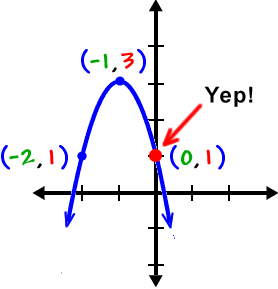Here's one more thing I want to point out... This takes us back to when we graphed lines in this form:
![]()
When we let
![]() ,
we get the y-intercept (where the graph
crosses the y-axis).
,
we get the y-intercept (where the graph
crosses the y-axis).

We can do the same thing on these!
Check out the first guy we did:
![]()
Let ![]()
|
|
|
Here's the second one we did:
![]()
Let
![]()
|
|
|
Once you get the idea, you can get the y-intercept
just by glancing!
|
|
|





